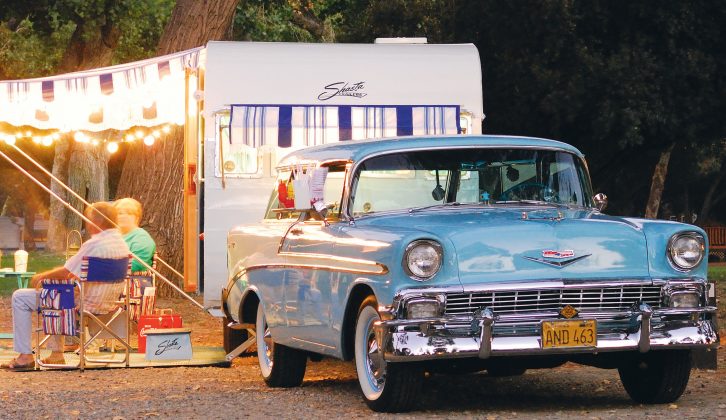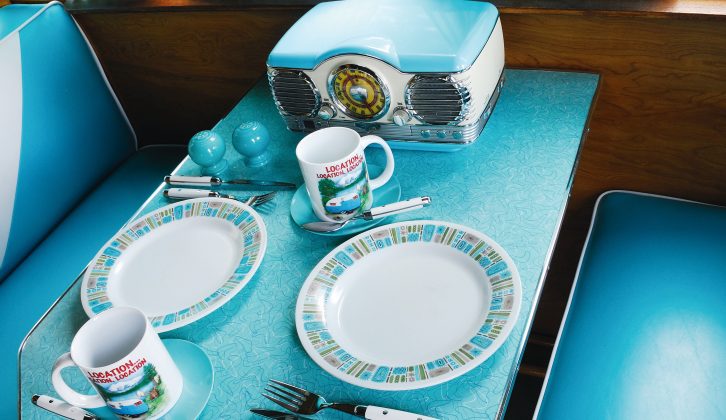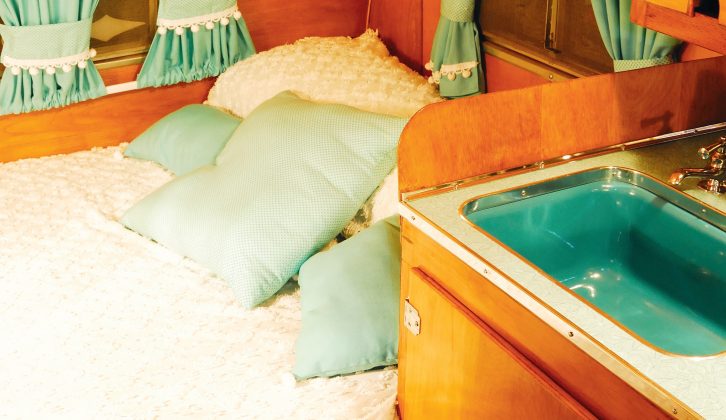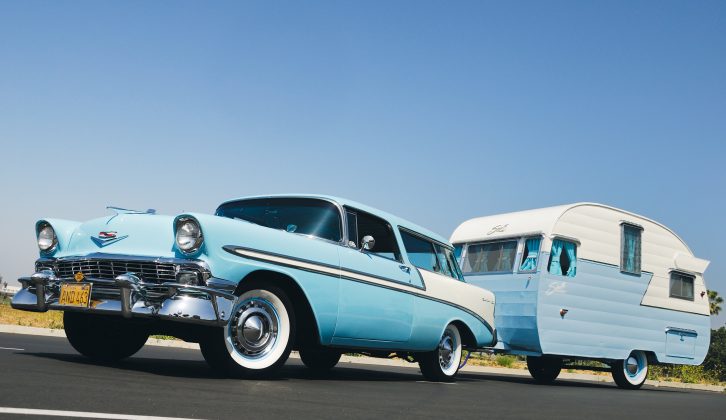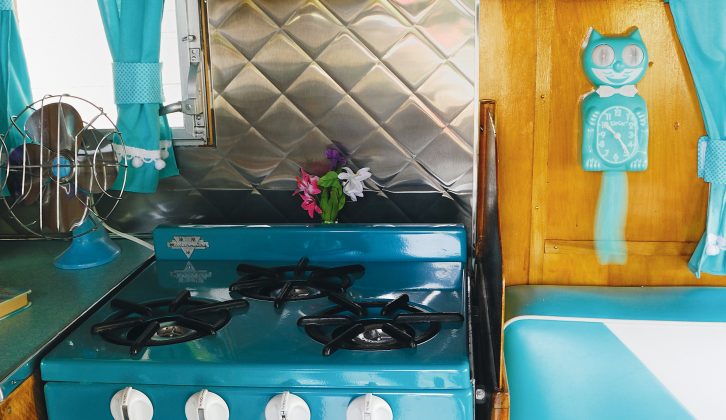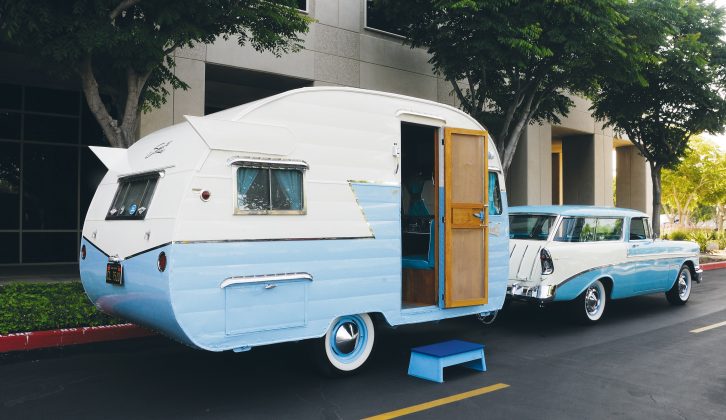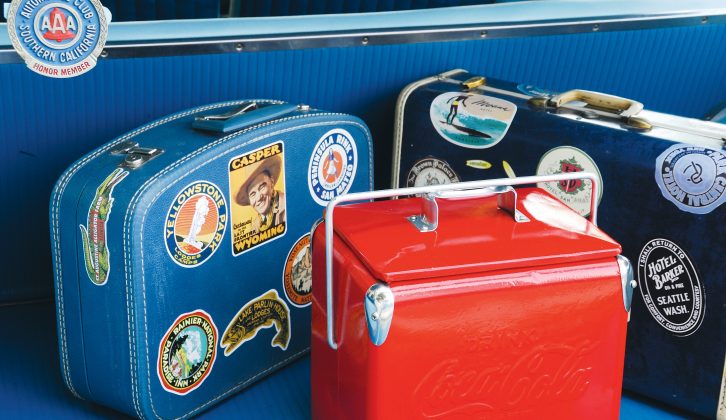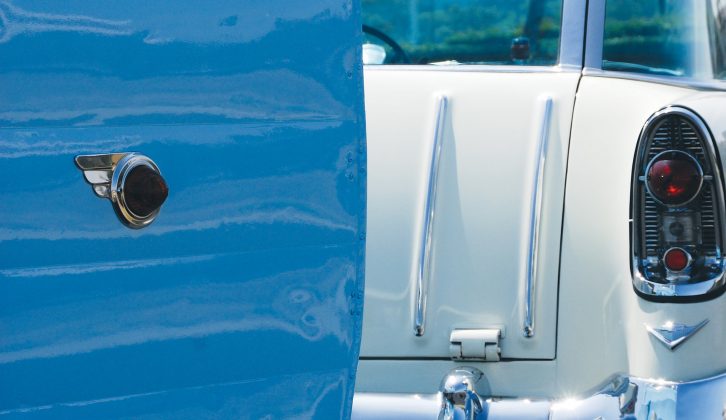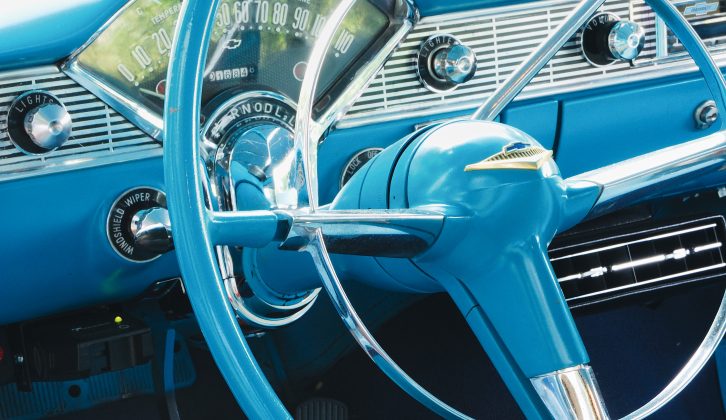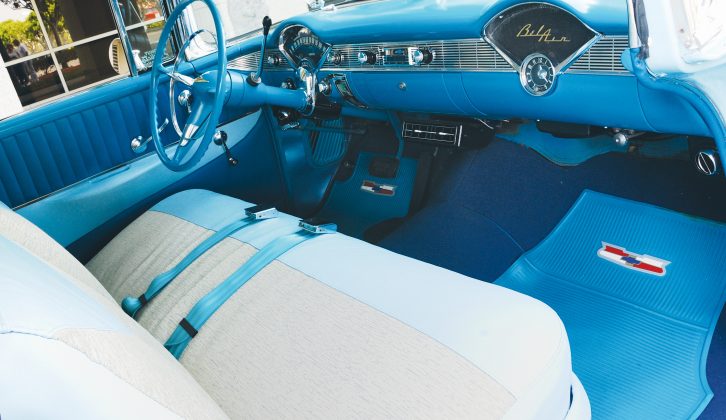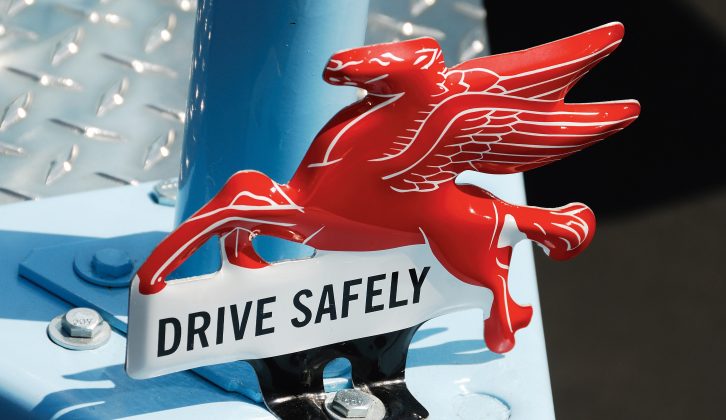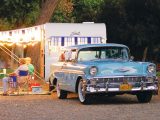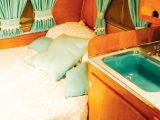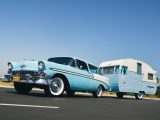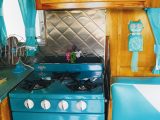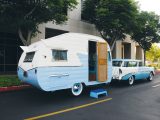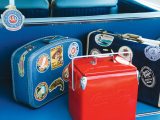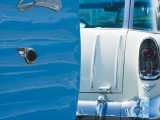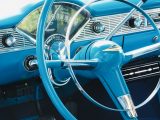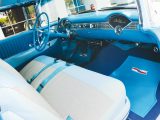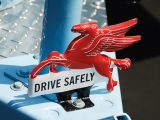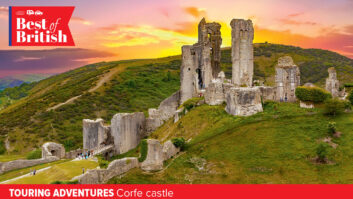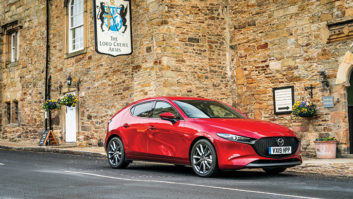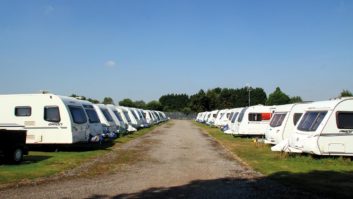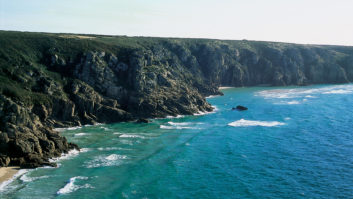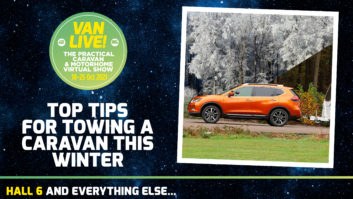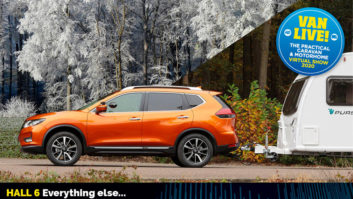A decade after the end of World War II, prosperity and optimism in the United States were at an all-time high, despite the ongoing Cold War with the Soviet Union. American families, the first of what would later be called the ‘Baby Boomer’ generation, were enjoying unprecedented prosperity and an ever-improving standard of living. Many were migrating from big cities to the suburbs, while Detroit expanded model lines to meet record demand for cars.
The needs of these more affluent and mobile families were addressed by an expanding number of ‘station wagons’, or estate cars. While Ford was the clearly established leader in this category, Chevrolet was competitive with a full line-up of ‘standard-sized’ station wagons: the One-Fifty, the Two-Ten, and the Bel Air, which was headed up by the stylish two-door Nomad.
For 1956, the standard-sized Chevrolets remained America’s best-sellers with dealers selling 1,621,004 units in the calendar year. The Nomad was truly a niche model, selling just 7886 units, which would later enhance its desirability among collectors. Chevrolet offered a car for almost every potential buyer, and the top-of-the line Nomad, at $2608, was several hundred dollars more expensive than even the Bel Air Convertible.
At the same time that Chevrolet was leading the post-war sales boom, American families were enjoying their new-found disposable income and looking for fresh ways to spend it. Recreational vehicles (RVs), and in particular ‘travel trailers’ (tourers to us Brits), increasingly filled this need. The best known, over here at least, is the legendary Airstream, whose aircraft-inspired silver palaces have become, like the Tri-Five Chevys, American icons.
Slightly less familiar to British audiences was the Shasta, whose distinctive ‘canned ham’ shape and, later, side-mounted wings made of wood and aluminium became a common sight on American highways. Like Airstream, Shasta’s origins lie before America entered World War II, when in 1941 Robert Grey started building mobile trailers for the US military, for use in remote locations.
The firm’s product was originally known as the ‘Cozy Cruiser’, but by 1952 it had become the ‘Shasta’, after a competition was held to decide a new name. These early Shasta tourers were manufactured in a plant in Van Nuys, California, in the shadow of the huge General Motors plant, which, by coincidence, built standard-sized Chevrolets!
In 1956, Shasta offered the Model 1500 for around $1000, but if you wanted a toilet and shower you opted for the larger Model 1800. Two years later, the 5.49m Airflyte was released, incorprating more than 50 improvements, including more windows and a sleeker, more aerodynamic shape. Built from wood and aluminium, they were joined by the 5.79m long, 2.43m wide Deluxe, which also had an integrated toilet and shower compartment. Shasta continued to grow throughout the 1960s, expanding its line in several directions. In 1965 construction was simplified, with wood panelling replacing the elegant birch interiors of earlier models.
Unfortunately, the first OPEC Oil Embargo hit the RV industry especially hard, severely affecting Shasta. In 1975, US RV manufacturer Coachmen Industries bought the brand and by the 1980s the name had all but disappeared from the roads. However, recently the line has been reintroduced by Coachmen, with the 5.3m Shasta Airflyte recreating many of the marque’s classic styling cues in an updated format. The overall look survives, but with contemporary construction techniques and an interior that’s loaded with modern amenities such as a flat-screen LCD television.
Scroll back to the 1950s and unite those two icons of American design – Chevy and Shasta – and you have the rather magnificent outfit owned by Karen and David Jennings. The Jennings, who call southern California home, are part of a growing trend of enthusiasts who tow their restored classic caravans with period-correct cars, pick-ups and, in some cases, even classic trucks.
Karen and David have, over the years, owned a number of classic cars and caravans, starting with a 1957 Chevrolet 210 station wagon. Their first trailer, bought while raising their two (now grown-up) daughters, was a 1960 Shasta found in the RV Trader and hauled by their 210.
“I remember cruising up Highway 1 to Big Sur and having people give us the thumbs-up and snap pictures of us,” says David. “Back then we had no idea how popular that little Shasta would become. Once the girls had grown, we sold both the car and trailer then turned our attention to muscle cars.
“The love for classics seems to run in our family. Our daughter Laura bought a 1956 Chevy sedan as her first car.”
In the summer of 2006, with their nest by then virtually empty, David and Karen decided it was time to begin the search for their dream car, a Chevrolet Nomad. That search led them to Florida dealer Specialty Auto, where they found a beautiful turquoise-and-white 1956 Nomad with 98,000 miles on the clock. David and Karen flew down to Florida and bought the Nomad without even driving it.
Although the original engine ran perfectly well, David wanted more power! So, taking the route of many Chevy enthusiasts, he purchased a GM 350 ‘crate’ motor and dressed up the engine compartment with a little chrome and polished aluminium. He also uprated the driveline, suspension, tyres and brakes as well in order to cope with his plan for his new toy: to use it to pull a matching classic caravan.
“We have owned vintage trailers for the past 20 years,” explains Karen, “so when we purchased our Nomad we began to look for a 1956 trailer to pull with it. We decided on a Shasta because we love the looks – it feels like a log-cabin on wheels with its rich birchwood interior.”
“Also,” says David, “we had previously had an Airstream and to be honest I had reached my limit on spending countless hours polishing the bodywork!”
In August 2007 their search began, and after looking in all the usual places for finding such things in the US – Tin Can Tourists, eBay, Birchwood Beauties and the Vintage Shasta Club – and missing out winning several auctions, they were lucky enough to spot a 1956 Shasta 1500 advertised on classified ads site Craigslist.
“We had been searching for months,” recalls Karen, “and purchased the Shasta in Santa Fe Springs, California, even though it needed extensive restoration.
“The condition of the trailer wasn’t a big concern because we knew that we wanted to ‘match’ it to the Nomad. The Shasta was in fairly good shape overall, but the exterior had been hand-painted brown and the interior wood was water-stained. The renovation process was painstaking, but definitely a labour of love. Working every day after work and at the weekends, we began on the interior, replacing most of the birchwood, hand-sanding the cabinets and restaining and spar-varnishing all of the woodwork. We installed period-correct aqua-coloured boomerang-style laminate on the countertops and table – having located a suitable pattern at Frost Hardwood and Lumber in San Diego. Even though neither of us had ever laminated a countertop before, we did all of the work ourselves.
“We then had the sink, stove and icebox powder-coated in the same colour as the interior of the Nomad. We laid new marmoleum flooring – found at Linoleum City in Hollywood – and had the bench seats reupholstered. New curtains were made, along with awnings for the side, front and back, as well as a matching changing room and director’s chairs.”
The Jennings wanted to avoid clutter but couldn’t resist adding a few extras, including the Kit-Kat clock, vintage ice crusher and mirror, and chenille bedspread, plus a few other retro items. To complete the project, they turned to Blue Mountain auto body repair shop in Grand Terrace, California, for an exterior paint colour to complement the Nomad. The final result speaks for itself. The overall look is just so ‘right’, especially when pitched in a campsite setting such as the Canyon RV Resort in Anaheim Hills, California, where we took our pictures.
Best of all, the outfit looks like any other restored Nomad and caravan from the outside, yet with the Chevy’s uprated drivetrain and brakes, it is easily capable of towing the Shasta long distances across the USA.
“We have a real passion for classic caravans and love being a part of the vintage trailer community,” says Karen. “We participate in several rallies each year, plus we organise and are Wagon Masters for the Christian Vintage Trailer Club’s ‘Ride The Wild Surf’ rally at Newport Dunes each October. We have seen the vintage trailer community grow tremendously in the past few years: there is love and admiration for these beautiful reminders of the past.”
It feels like a log-cabin on wheels with its rich birchwood interior
